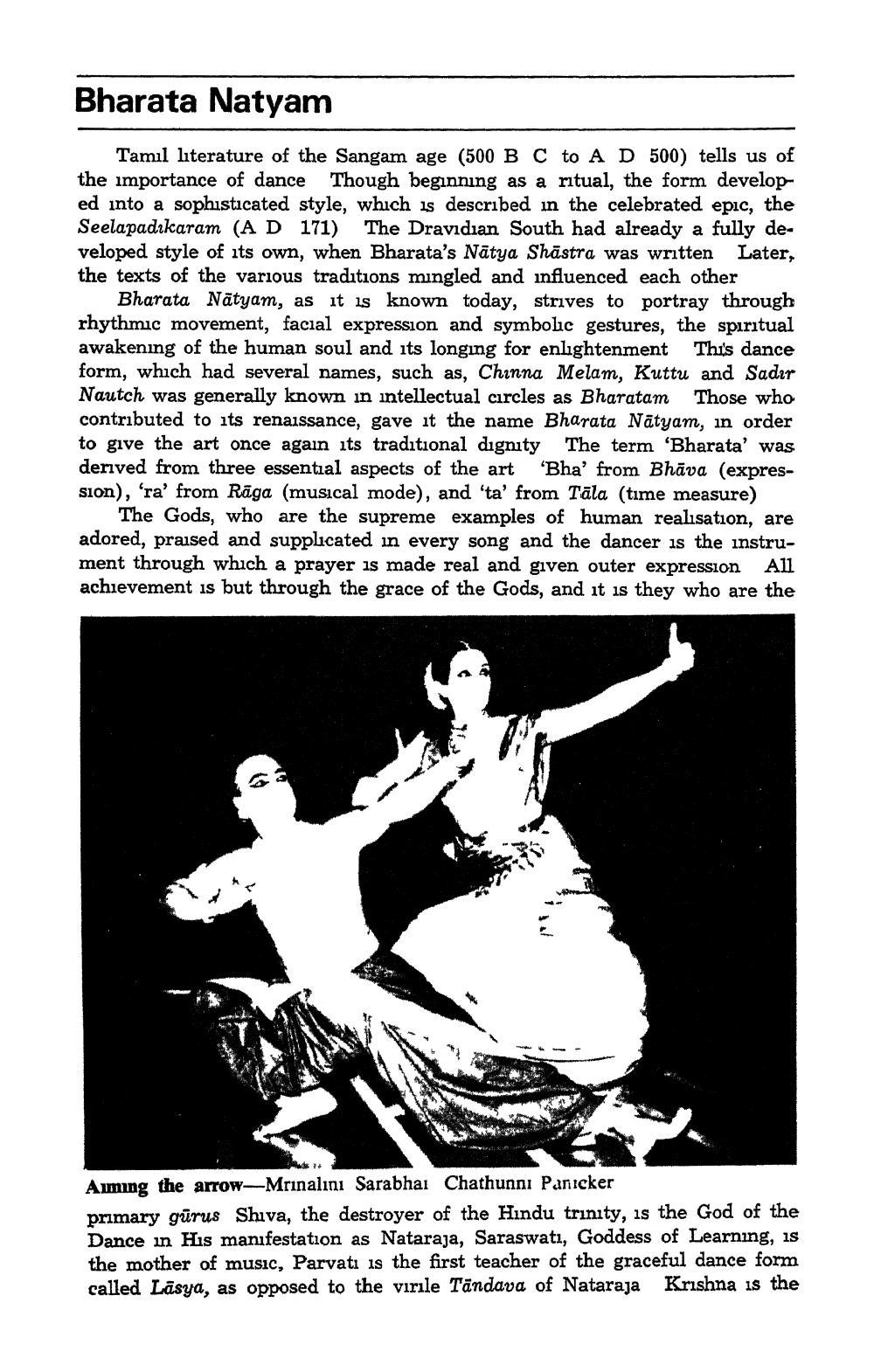Book Title: Sacred Dance of India Author(s): Mrinalini Sarabhai Publisher: Bharatiya Vidya Bhavan View full book textPage 9
________________ Bharata Natyam Tamil literature of the Sangam age (500 B C to A D 500) tells us of the importance of dance Though beginning as a ritual, the form develop ed into a sophisticated style, which is described in the celebrated epic, the Seelapadıkaram (A D 171) The Dravidian South had already a fully developed style of its own, when Bharata's Nātya Shastra was written Later, the texts of the various traditions mingled and influenced each other Bharata Nātyam, as it is known today, strives to portray through rhythmic movement, facial expression and symbolic gestures, the spiritual awakening of the human soul and its longing for enlightenment This dance form, which had several names, such as, Chinna Melam, Kuttu and Sadır Nautch was generally known in intellectual circles as Bharatam Those who contributed to its renaissance, gave it the name Bharata Nātyam, in order to give the art once again its traditional dignity The term 'Bharata' was derived from three essential aspects of the art 'Bha' from Bhāva (expression), fra' from Raga (musical mode), and 'ta' from Tāla (time measure) The Gods, who are the supreme examples of human realisation, are adored, praised and supplicated in every song and the dancer is the instrument through which a prayer is made real and given outer expression All achievement is but through the grace of the Gods, and it is they who are the 2 Aiming the arrow-Mrinalını Sarabhai Chathunni Panicker primary gūrus Shiva, the destroyer of the Hindu trinity, is the God of the Dance in His manifestation as Nataraja, Saraswati, Goddess of Learning, is the mother of music, Parvati is the first teacher of the graceful dance form called Läsya, as opposed to the virile Tāndava of Nataraja Krishna is thePage Navigation
1 ... 7 8 9 10 11 12 13 14 15 16 17 18 19 20 21 22 23 24 25 26 27 28 29 30 31 32 33 34 35 36 37 38 39 40 41 42 43 44 45 46 47 48
